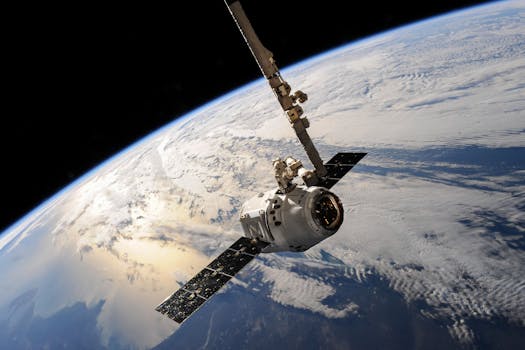The Future of Satellites: Revolutionizing Global Connectivity
The future of satellites is poised to revolutionize global connectivity, enabling faster and more reliable communication networks. With advancements in technology, satellites are becoming increasingly important for a wide range of applications, from navigation and communication to weather forecasting and Earth observation.

The Future of Satellites: Revolutionizing Global Connectivity
The future of satellites is poised to revolutionize global connectivity, enabling faster and more reliable communication networks. With advancements in technology, satellites are becoming increasingly important for a wide range of applications, from navigation and communication to weather forecasting and Earth observation. The focus keyword Future of satellites is an exciting and rapidly evolving field, with new developments and innovations emerging all the time.
In recent years, there has been a significant increase in the number of satellites being launched into space, with many more planned for the future. This growth is driven by the increasing demand for satellite-based services, such as satellite television, satellite radio, and satellite internet. The use of satellites is also becoming more prevalent in fields such as agriculture, where they are used for crop monitoring and precision farming, and in the military, where they are used for navigation and communication.
Advancements in Satellite Technology
One of the key drivers of the future of satellites is the advancement of technology. New materials and designs are being developed that allow satellites to be smaller, lighter, and more efficient. This has led to a reduction in the cost of launching satellites, making them more accessible to a wider range of organizations and individuals. Additionally, advancements in propulsion systems and power sources are enabling satellites to operate for longer periods of time and to travel further into space.
Another area of advancement is in the field of satellite communication. New technologies such as Ka-band and Q/V-band are enabling faster and more reliable communication networks, with higher bandwidth and lower latency. This is particularly important for applications such as satellite internet, where fast and reliable communication is critical. The development of new antenna technologies, such as phased array antennas, is also improving the performance and efficiency of satellite communication systems.
Applications of Satellites
Satellites have a wide range of applications, from navigation and communication to weather forecasting and Earth observation. One of the most well-known applications of satellites is in the field of navigation, where they are used for GPS and other navigation systems. Satellites are also used for communication, providing internet and telephone connectivity to remote and underserved areas.
Satellites are also used for weather forecasting, providing critical data on weather patterns and storms. This data is used to predict weather patterns and to issue warnings for severe weather events. Satellites are also used for Earth observation, providing data on the health of the planet and the impact of human activities on the environment. This data is used to monitor climate change, deforestation, and other environmental issues.
Challenges and Opportunities
Despite the many advantages of satellites, there are also challenges and opportunities that need to be addressed. One of the key challenges is the issue of space debris, which poses a significant risk to the operation of satellites and other space-based systems. The growth of the satellite industry is also raising concerns about the impact of satellites on the environment, particularly in terms of the amount of waste generated by satellite launches and the potential for satellites to interfere with other space-based systems.
However, the future of satellites also presents many opportunities for innovation and growth. The development of new technologies and applications is creating new markets and opportunities for satellite-based services. The use of satellites is also becoming more prevalent in fields such as agriculture, where they are used for crop monitoring and precision farming, and in the military, where they are used for navigation and communication.



